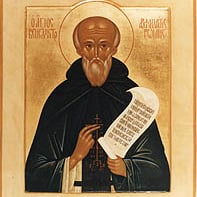Pope Leo XIV – Inaugural Mass Homily
Elected on May 8, 2025, as the 267th successor of St. Peter, Pope Leo XIV’...

Little is known of this humble man who became the Patriarch of Western Monasticism. Born in Nursia around 480AD, St. Benedict was educated in Rome. The decadence of Roman society of that time led Saint Benedict to withdraw to a quiet, mountainous area South of Rome called Subiaco where he lived in a cave, as a hermit. A community of hermits grew up around him and coalesced into twelve monasteries of twelve monks each, with abbots appointed by St. Benedict. Local jealousy led to an attempt on Saint Benedict’s life. And so, around 525AD, St. Benedict moved with a small band of monks to Monte Cassino, between Rome and Naples, where Benedict remained till his death around 550AD. He was buried at Monte Cassino in the same grave as his sister, St. Scholastica. A generation or two after his death, a Benedictine monk ascended the throne of St. Peter and took the name Pope Gregory I, otherwise known as St. Gregory the Great. Pope St. Gregory wrote the only biography of St. Benedict from this period, and it forms part of St. Gregory’s Dialogues. It was at Monte Cassino that St. Benedict wrote his Rule or way of life, which brought order, stability, and moderation to the practice of monastic life. Through a life of common prayer and work, the rule was designed to lead those who follow it to the peace that only Christ can bring. Hence the two Latin phrases that can be considered to be the motto of St. Benedict and his followers: Ora et Labora and Pax. Because Benedict's Rule was so eminently reasonable and practical, it became the primary standard for monastic life in the Western Church from the time of Charlemagne until the time of Sts. Francis and Dominic. Monks following the rule of Benedict founded monasteries all over Europe from England to Germany and from Italy to Spain. The Crusaders even brought Benedictine life to the Holy Land. It was Benedictine monasteries that largely served as the centers of evangelization and Christian education throughout Europe for at least five centuries. And today it is not just Benedictine Monasteries that follow St. Benedict’s rule, but Cistercian and Trappist monasteries as well. Because of the role of his rule in Christianizing and stabilizing Western culture, St. Benedict was named co-Patron of Europe by Pope Paul VI in 1964. The irony in this, of course, was that Saint Benedict apparently had no idea of this future impact. He was a simple man, leading other men to a simple life of prayer and work which was their chosen path to peace and holiness. Biography by Dr. Italy